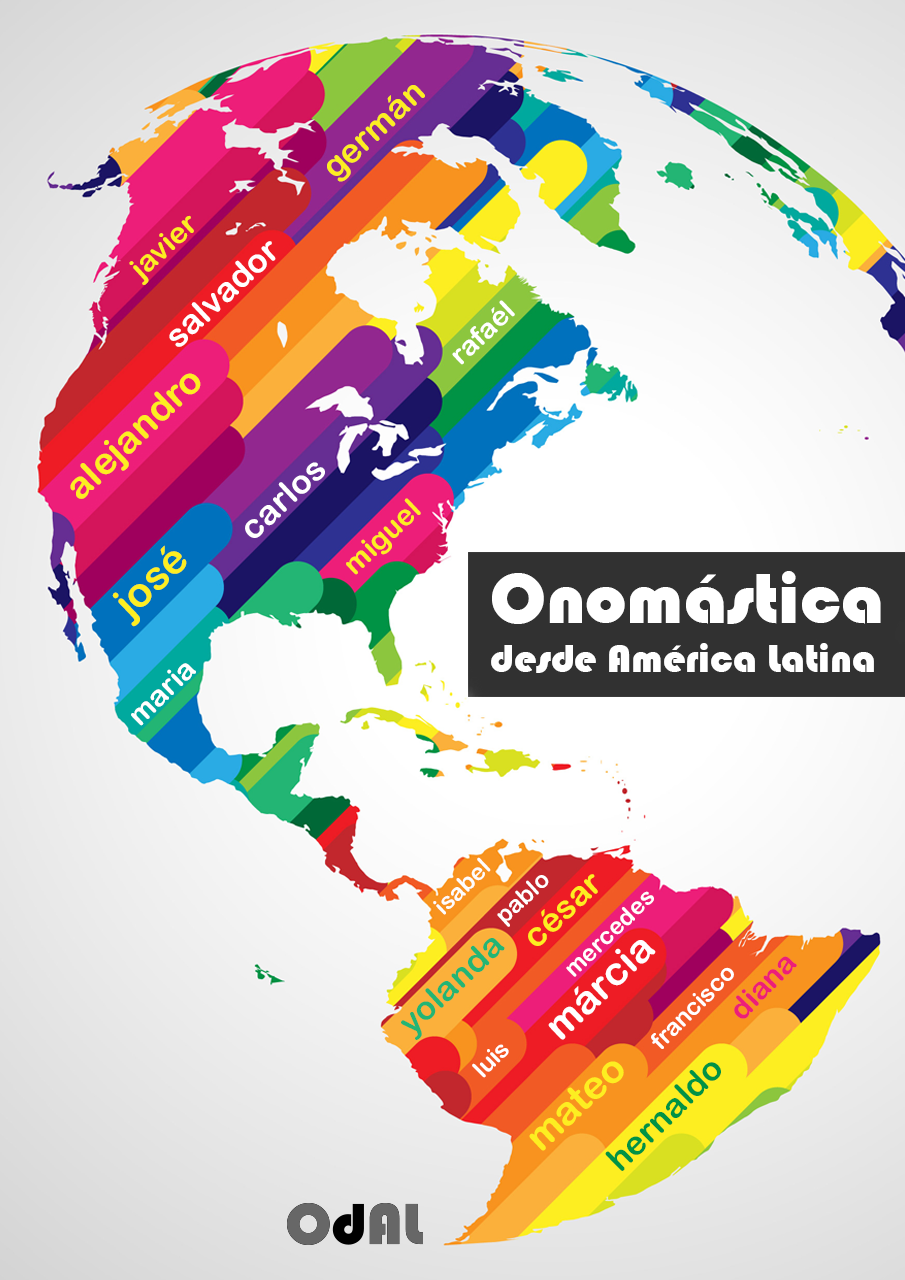La symbolique de trois prénoms féminins dans "Les Vertueux" de Yasmina Khadra
DOI:
https://doi.org/10.48075/odal.v6i1.32640Palavras-chave:
prénom littéraire, prénom social, symbolique onomastique, portée sémantico-culturelle, sémio-onomastique, conscientisation du personnageResumo
Le prénom littéraire est le signe linguistique autour duquel se construit la compréhension du récit. L’auteur deLes Vertueux voue un culte immodéré pour les prénoms. D’ailleurs, lui-même écrit sous un nom de plume relatif aux prénoms de sa femmeYasminaKhadra.Nos différentes lectures des œuvres de l’auteur et en particulier la dernière en date, nous a poussé à nous intéresser aux prénoms attribués aux trois personnages féminins dans le roman, Abla, Lalla et Mariem. Nous pensons que, pour l’auteur,les prénoms appartiennent à des classes lexico-sémantiques au même titre qu’un sujet ou un verbe dans une phrase. Le prénom chez Khadraforge le personnage et non le contraire. Pour lui, le prénom est réel et non fictif et il apparaît comme une composante essentielle de l’écriture romanesque. L’acte de prénommer ces personnages est plus social que littéraire, car non seulement la portée sémantico-culturelle est prégnante, mais en plus, le lecteur averti[1] arrive à cerner l’épaisseur du personnage à travers le prénom.Nous tenterons à travers une analyse sémio-onomastique de cerner la portée symbolique du choix des prénoms féminins utilisés par l’auteur. Trois prénoms féminin relatifs aux trois figures emblématiques dans le récit constitueront le point de départ de cette progression. Nous allons inventorier tous les éléments discursifs relatifs aux trois personnages féminins et comparer leurs prénoms éponymes avec les données historiques, culturelles et religieuses locales pour mettre en exergue l’ampleur de la charge symbolique des prénoms. Cette progression s’appuie sur les travaux de Zonabend (2001) et Iliescu (2013) qui valorisent la conscientisation du personnage qui demeure un acte intimement lié à la dénomination.
Referências
Baudelle, Y. (2008). Onomastique romanesque. L’Harmattan. Paris.
Bengoua, S. (2021). Appellatifs, surnoms et prénoms pour les femmes dans la chanson rai algérienne, In Revue Socles, V10, n°1, 2021, pp 165-189, p178.
Cheriguen, F. (2008). Essais de sémiotique du nom propre et du texte. OPU. Alger.
Dickinson, J. (1998). La prénomination dans quatre villages de la plaine de Caen, 1600-1800.Annales de Normandie, 48 (1): 67-104. https://www.persee.fr/doc/annor_0003-4134_1998_num_48_1_4829.
Harzoune, M. (2005). L’attentat, yasmina Khadra, Julliard, 2005 ; La nuit des origines, Nourredine Saadi, L’Aube, 2005 ; Harraga, Boualem Sansal, Gallimard. In : Hommes et migration, n°1258, Novembre-décembre 2005. Laicité : les 100 ans d’une idée neuve. I. A l’école. Pp147-149.
Iliescu, A. (2018). La relation nom propre– nom littéraire. La science qui s’occupe de l'étude des noms propres s’appelle onomastique littéraire, URL: cis01. Central. ucv. ro› revista_scol,
Parpală, E. (2007). Semiotica generală. Pragmatică, Craiova, Editura Universitaria.
Sadaka, J.M. (2016). Figures saintes chrétiennes-musulmanes connues, Editions Publibook, 151 pagesSangoї, J.-Cl. (1985). La transmission d’un bien symbolique : Le prénom.Terrain, 4:70-76.https://doi.org/10.4000/terrain.2873.
Yasmina, K. (2022). Les vertueux, Pocket, Paris, 502 pages.
Zonabend, F. (2001). Prénom, temps, identité. In Spirale, V°3, n°19, pp.41-49.
Downloads
Publicado
Como Citar
Edição
Seção
Licença
Copyright (c) 2025 soufiane bengoua

Este trabalho está licenciado sob uma licença Creative Commons Attribution-NonCommercial-ShareAlike 4.0 International License.
Aviso de Direito Autoral Creative Commons
Política para Periódicos de Acesso Livre
Autores que publicam nesta revista concordam com os seguintes termos:
1. Autores mantém os direitos autorais e concedem à revista o direito de primeira publicação, com o trabalho simultaneamente licenciado sob a Licença Creative Commons Attribution que permite o compartilhamento do trabalho com reconhecimento da autoria e publicação inicial nesta revista.
2. Autores têm autorização para assumir contratos adicionais separadamente, para distribuição não-exclusiva da versão do trabalho publicada nesta revista (ex.: publicar em repositório institucional ou como capítulo de livro), com reconhecimento de autoria e publicação inicial nesta revista.
3. Autores têm permissão e são estimulados a publicar e distribuir seu trabalho online (ex.: em repositórios institucionais ou na sua página pessoal) a qualquer ponto antes ou durante o processo editorial, já que isso pode gerar alterações produtivas, bem como aumentar o impacto e a citação do trabalho publicado (Veja O Efeito do Acesso Livre).
Licença Creative Commons
Esta obra está licenciada com uma Licença Creative Commons Atribuição-NãoComercial-CompartilhaIgual 4.0 Internacional, o que permite compartilhar, copiar, distribuir, exibir, reproduzir, a totalidade ou partes desde que não tenha objetivo comercial e sejam citados os autores e a fonte.

